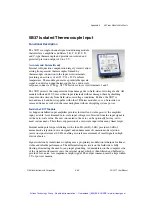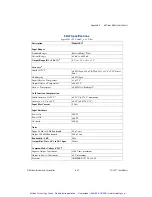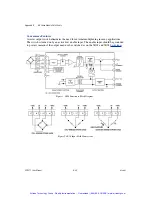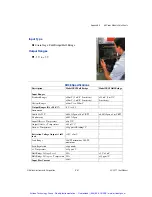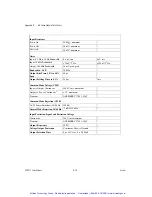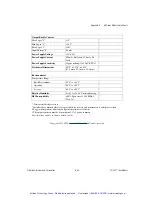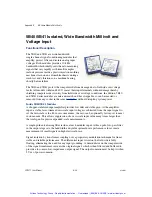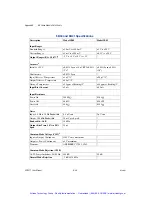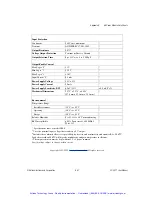
Appendix B
5B Series Module Data Sheets
©
National Instruments Corporation
B-25
SC-2311 User Manual
5B37 Isolated Thermocouple Input
Functional Description
The 5B37 is a single-channel signal conditioning module
that interfaces, amplifies and filters J, K, T, E, R, S, N,
and C-type thermocouple and provides an isolated and
protected precision output of 0 to +5 V.
Accurate and System-Ready
Internal cold-junction compensation largely corrects errors
arising from parasitic thermocouples formed by
thermocouple connection to the input screw terminals,
providing an accuracy of ±0.25˚C @ +25˚C ambient
temperature. The module generates a predictable upscale
signal to indicate an open thermocouple; for a downscale
response, connect a 47 M
, 0.25 W resistor across screw terminals 1 and 3.
The 5B37 protects the computer side from damage due to field-side overvoltage faults. All
models withstand 240 V rms at their input terminals without damage, thereby shielding
computer-side circuitry from field-side overvoltage conditions. Further, the 5B37 is
mix-and-match and hot-swappable with other 5B Series modules, so can be inserted or
removed from any socket in the same backplane without disrupting system power.
Inside the 5B37 Module
A chopper-stabilized input amplifier provides low drift and stable gain. At the amplifier
input, a stable, laser-trimmed zero-scale input voltage is subtracted from the input signal to
set the zero-scale value. For user convenience, the zero can be optionally factory-set to
meet custom needs. This allows suppression of a zero-scale input value many times larger
Internal multi-pole lowpass filtering with a four-Hz cutoff (-3 dB) provides 60 dB of
normal-mode rejection (noise on signal) and enhancement of common-mode rejection
(noise on signal return) at 60 Hz, enabling accurate measurement of small signals in high
electrical noise.
Signal isolation by transformer coupling uses a proprietary modulation technique for linear,
stable and reliable performance. The differential input circuit on the field side is fully
floating, eliminating the need for any input grounding. A demodulator on the computer side
of the signal transformer recovers the original signal, which is then filtered and buffered to
provide a low-noise, low-impedance output signal. The output common must be kept within
3 V of power common.
Artisan Technology Group - Quality Instrumentation ... Guaranteed | (888) 88-SOURCE | www.artisantg.com















